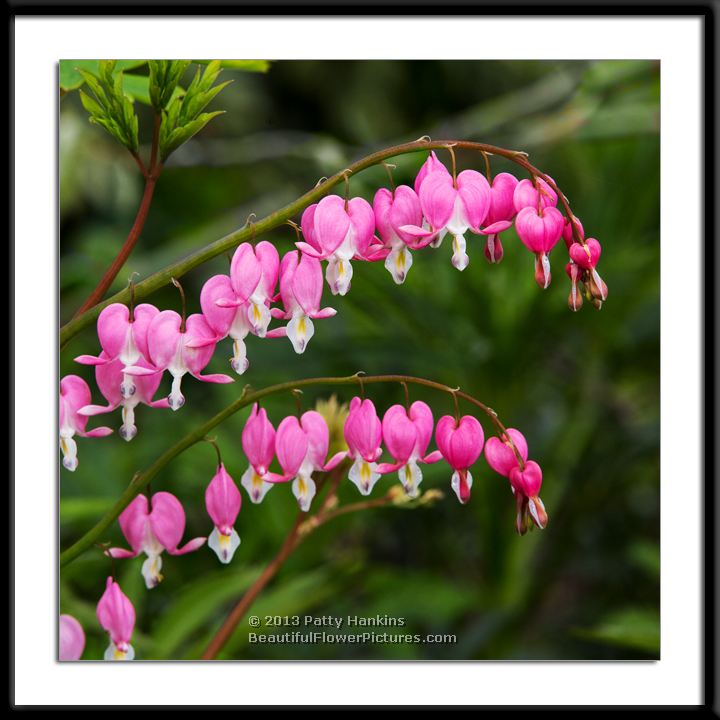by hankinslawrenceimages | Feb 2, 2013 | New Photos, Papaveraceae Family
Bleeding Hearts © 2013 Patty Hankins
I’ve recently added a new photo – Bleeding Hearts – to my Beautifulflowerpictures.com website.
Bleeding Hearts (Dicentra spectabilis) are one of my favorite spring flowers. I love seeing the heart-shaped splashes of pink and white against the greens of the garden.
The heart shaped varieties seen in gardens originated in Japan. They were introduced in England in the 1840s, and then imported to the United States. There is also a type of bleeding hearts (Dicentra exima) native to the United States. I’ve photographed the wild bleeding hearts in the mountains of Tennessee.
This photograph is available as a 10 X 10″ or 20 X 20″ gallery-wrapped canvas. You can order Bleeding Hearts from my website.
by hankinslawrenceimages | Jan 5, 2013 | New Photos, Papaveraceae Family
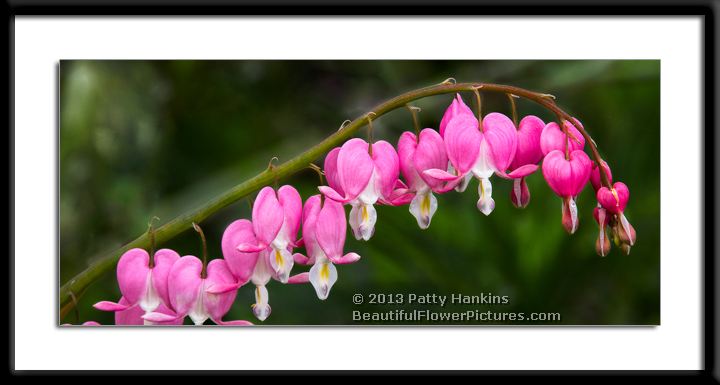
Bleeding Hearts © 2012 Patty Hankins
I’ve recently added a new photo – Bleeding Hearts – to my Beautifulflowerpictures.com website.
Bleeding Hearts (Dicentra spectabilis) are one of my favorite spring flowers. I love seeing the heart-shaped splashes of pink and white against the greens of the garden.
The heart shaped varieties seen in gardens originated in Japan. They were introduced in England in the 1840s, and then imported to the United States. There is also a type of bleeding hearts (Dicentra exima) native to the United States. I’ve photographed the wild bleeding hearts in the mountains of Tennessee.
This photograph is available as an 8 X 18″ gallery-wrapped canvas. You can order Bleeding Hearts from my website.
by hankinslawrenceimages | Jun 16, 2012 | Flowers, New Photos, Papaveraceae Family, Wildflowers

Bloodroot @ 2012 Patty Hankins
I’ve recently added a new photo – Bloodroot – to my Beautifulflowerpictures.com website.
Bloodroot (Sanguinaria canadensis) is one of the earliest blooming wildflowers in the Washington DC area. A member of the Papaveraceae (poppy family), it stores energy in the bulbs over the winter so is able to bloom here in late March. The blossoms last only a day or two, so it can be a challenge finding them in good enough shape to photograph. I found this bloodroot at Turkey Run Park in Virginia this spring. Bloodroot is the only member of the poppy family native to North America – where it can be found from Nova Scotia to Florida, and as far west as Manitoba and Nebraska.
Bloodroot is known for it’s bright red juice. Native Americans used the juice for painting their faces, and as a dye for baskets and clothing. Early European settlers used it to dye wool. Medicinally, bloodroot was used as a blood purifier and to treat everything from cancer to repelling insects. Most modern herbalists recommend use of bloodroot only under medical supervision, since it can be deadly.
A recent use for bloodroot is fighting plaque. An extract from the plant, sanguinarine, when used in mouthwash and toothpaste can fight gum disease.
This photograph is available as either at 10 X 10″ or 20 X 20″ gallery-wrapped canvas. You can order Bloodroot from my website.
by hankinslawrenceimages | Apr 11, 2012 | Flowers, Papaveraceae Family, Wildflowers
Some of my favorite spring flowers are the various varieties of bleeding hearts – and Green Spring Gardens in Alexandria Virginia is my favorite place to photograph them.
Bleeding hearts are members of the Fumariaceae family – native to Asia and North America. Each flower has two sepals and four petals. The outer two petals are spurred – while the inner petals are straight. This combination of petals gives some of the flowers a heart-shape – where the common name Bleeding Hearts comes from.
When people think of Bleeding Heart flowers – they usually think of the little heart-shaped pink flowers that are native to Asia. The botanical name for these bleeding hearts is dicentra spectabilis.

© 2012 Patty Hankins
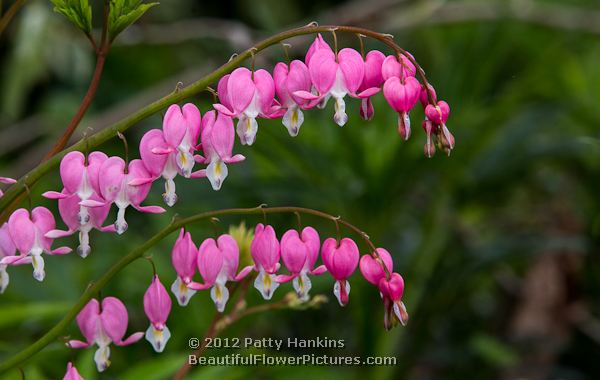
© 2012 Patty Hankins
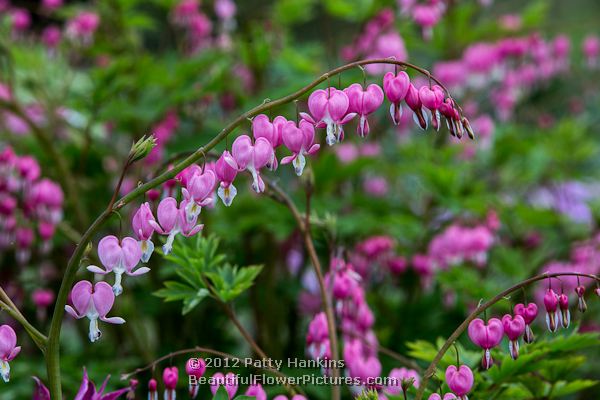
© 2012 Patty Hankins
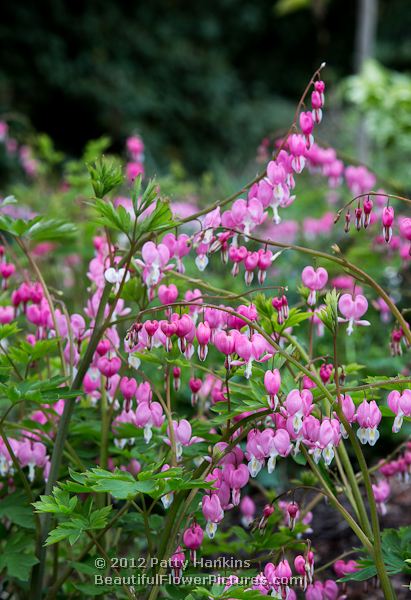
© 2012 Patty Hankins
Another variety with heart-shaped flowers are the White Bleeding Hearts – dicentra spectibilis Alba – also native to Asia.
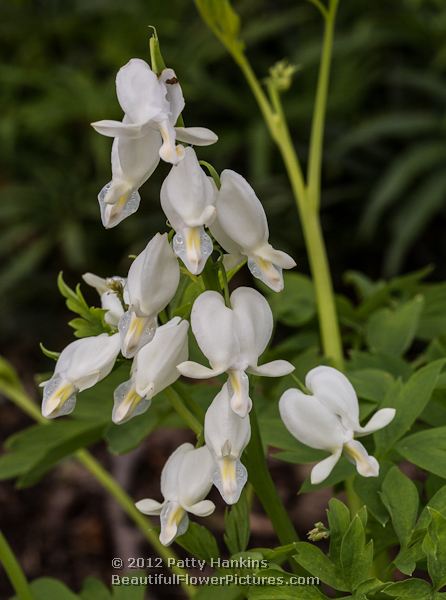
© 2012 Patty Hankins
And finally – one of my favorites – the bleeding hearts that are native to the Eastern United States – dicentra eximia
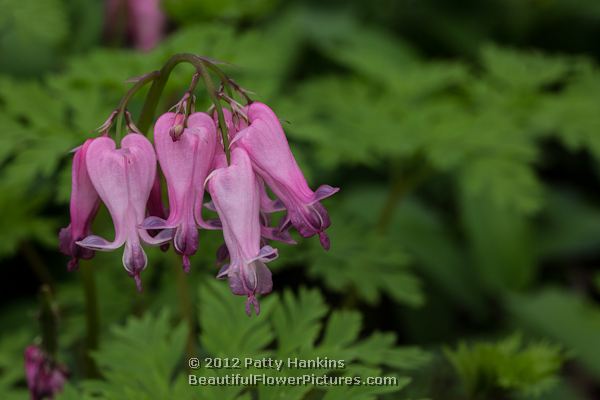
© 2012 Patty Hankins
by hankinslawrenceimages | Apr 4, 2012 | Flowers, Papaveraceae Family, Wildflowers
Once again, Dutchman’s Breeches (dicentra cucullaria) were one of the early spring wildflowers I had a wonderful time photographing. Last year I shared my photos and info about Dutchman’s Breeches in a blog post. So I won’t repeat the same info about the blossoms as I mentioned last year.

© 2012 Patty Hankins
What I have discovered is that the common name of these delicate flowers caused great discussion and controversy in the late 1900s! One botanist – Dr. Abbott wrote “To think that such a plant should be called ‘Dutchman’s Breeches’ If this abomination were dropped from Gray’s Manual, perhaps in time a decent substitute would come in use.” The issue was that in Victorian times – talking about clothing that covered certain parts of men’s anatomy just wasn’t done among ladies who were likely to be discussing gardening.

© 2012 Patty Hankins
So while people agreed with John Burroughs that Dutchman’s Breeches were “among our prettiest spring flowers” – they didn’t think the name was appropriate! Who knew???

© 2012 Patty Hankins

© 2012 Patty Hankins

© 2012 Patty Hankins
I photographed the Dutchman’s Breeches at McKee-Beshers Wildlife Management Area in Poolesville, Maryland and at Turkey Run Park in Virginia. Both locations are wonderful for early spring wildflowers.
Information about the controversy about calling these beautiful flowers Dutchman’s Breeches can be found int Jack Sanders’ The Secrets of Wildflowers.
by hankinslawrenceimages | Mar 7, 2012 | Flowers, Papaveraceae Family
I recently visited Longwood Gardens with the DC Flower Safari Meetup Group and had a fantastic time – we had a chance to see and photograph the Blue Poppies!!!!

© 2012 Patty Hankins
Blue poppies are native to the Himalayas. They are very difficult – if not impossible – to grow in warm climates. Research has shown that when exposed to temperatures warmer than 70 degrees – these cold-loving plants begin to die. Longwood Gardens in Kennett Square, Pennsylvania is one of the few places you can see them south of the Himalayas, Scotland or Alaska. Each year in March, the blue poppies are on display at Longwood.
This year, a few were already on display on March 4 – talking with the garden staff – they said more will be on exhibit later in the week. If you have a chance to visit Longwood Gardens in the next few weeks – I’d recommend visiting. The blue poppies are incredible.
Here are some of my photos of the beautiful flowers.

© 2012 Patty Hankins
 © 2012 Patty Hankins
© 2012 Patty Hankins
 © 2012 Patty Hankins
© 2012 Patty Hankins
 © 2012 Patty Hankins
© 2012 Patty Hankins
 © 2012 Patty Hankins
© 2012 Patty Hankins
 © 2012 Patty Hankins
© 2012 Patty Hankins
